 by "ttyymmnn" (ttyymmnn)
by "ttyymmnn" (ttyymmnn)
Published 08/04/2017 at 12:35
 by "ttyymmnn" (ttyymmnn)
by "ttyymmnn" (ttyymmnn)
Published 08/04/2017 at 12:35
Tags: planelopnik history
; Planelopnik
STARS: 2
Welcome to This Date in Aviation History , getting you caught up on milestones, important historical events and people in aviation from August 2 through August 4.
!!! UNKNOWN CONTENT TYPE !!!
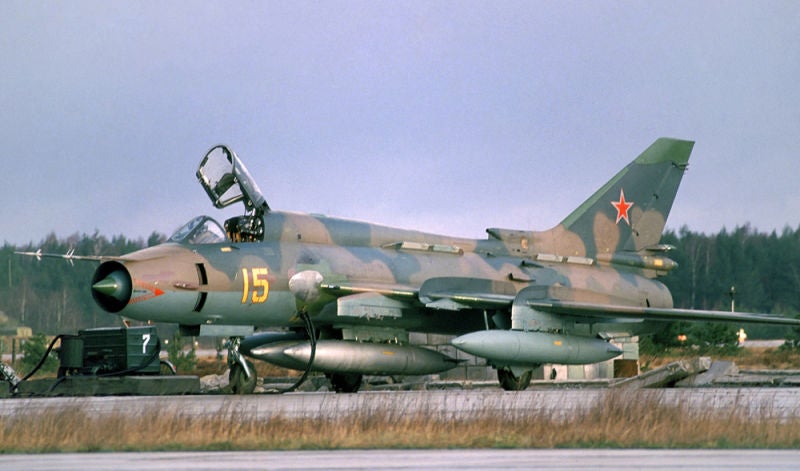
August 2, 1966 – The first flight of the Sukhoi Su-17. Before the adoption of the jet engine, almost all aircraft, dating back to the Wright Flyer, were built with straight wings. Straight wings are good for low-speed stability, but the advent of the turbojet engine led to experimentation with swept wings that would have less drag at higher speeds. But what if you could design an airplane that could benefit from both straight and swept wings? As early as 1944, the idea of having an airplane with a variable-sweep wing (also called variable-geometry) that could alter its wing sweep was being investigated in Germany with the Messerschmitt Me P.1101 . But this aircraft, which never entered production, could only vary the sweep of the wings to a fixed position before takeoff. In England, Barnes Wallis began working on a swing-wing concept in 1949, but it wasn’t until the experimental Bell X-5 , which first flew in 1951 and had three different wing positions, that an aircraft could change its wing sweep in flight. However, one of the problems faced by variable geometry aircraft is an unfavorable shift in the center of gravity when moving between the straight and swept positions. To counter this problem, Russian designers at the Central Aerohydrodynamic Institute (TsAGI) modified an existing aircraft, the Su-7B , to use a fixed central wing with a variable outer wing in the hopes of improving the Su-7's low-speed flight characteristics and lowering its landing speed. This new aircraft, dubbed the Su-7IG, was further developed into the Su-17 and become Russia’s first variable geometry aircraft and the first in a series of fighters that also included the Su-20 and the Su-22, all of which were given the NATO reporting name Fitter . Along with the modified wing, the Su-17 was given a new canopy and a dorsal spine for additional fuel and avionics.
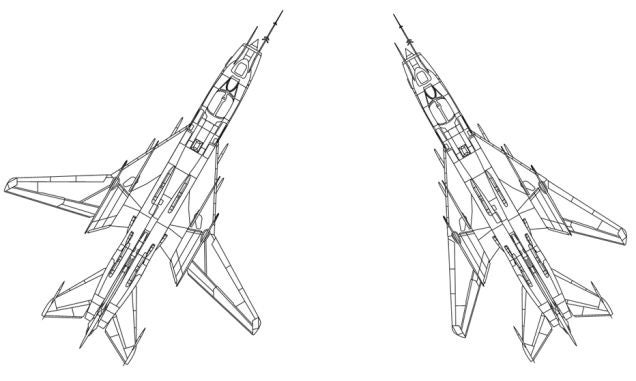
The Fitter was powered by a single Lyulka AL-21 afterburning axial flow turbojet that gave the Fitter a top speed of 870 mph, and it was armed with two 30mm cannons and could carry up to 8,800 pounds of external stores under the fixed wing section or on the fuselage. It entered service with the Soviet Air Force in 1970, where it served during the Soviet invasion of Afghanistan from 1979-1989. While high elevation and high temperature operations proved challenging for the Su-17, the ruggedly constructed engine was tolerant to sand ingestion and the Fitter maintained a high level of readiness, though it proved susceptible to anti-aircraft fire and shoulder-fired antiaircraft missiles. The Fitter was widely exported to Soviet allies, eventually serving for over 20 years with Russia and 15 export countries, including Libya, where two Su-17s were shot down by US Navy Grumman F-14 Tomcat fighters over the Gulf of Sidra in 1981. Despite advances in Soviet fighter design, the Su-17 and its derivatives remained in service with Russia until 1998, and more than 500 of the 2,867 aircraft produced remain in service today. (Photo by Rob Schleiffert via Wikimedia Commons ; schematic by Emoscopes via Wikimedia Commons )
!!! UNKNOWN CONTENT TYPE !!!
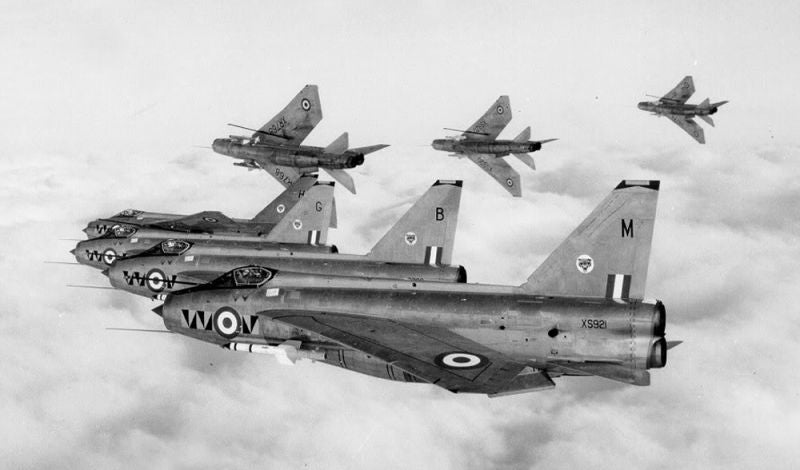
August 4, 1954 – The first flight of the English Electric Lightning P.1A. Though the world entered the nuclear age at the end of WWII in 1945, 14 years would pass before the first intercontinental ballistic missiles (ICBM) were be fielded by the Russians, who deployed the world’s first operational ICBM in 1959. But until that time, the only method of delivering a nuclear weapon into enemy territory was with high-flying bombers. To defend against those bombers, it was vital to intercept them as early as possible, and this called for a special breed of fighter aircraft, one that could fly as fast as possible to get to the bombers before they could reach the target. The idea of an interceptor was not new, but in the jet age, speed became the all important factor in their development. The British Aircraft Corporation (BAC) Lightning (following BAC’s merger with English Electric in 1960) was the RAF’s only Mach 2 interceptor when it entered service in 1960, but its development goes all the way back to 1947, when English Electric , the maker of the Canberra bomber, was awarded a contract to develop a supersonic research aircraft. To achieve supersonic speeds, English Electric designers employed a swept wing, but first, they needed to determine the optimal sweep. English Electric contracted with the Irish firm Short Brothers to create the Short SB.5 , a scaled down research aircraft whose wing and tailplane could be adjusted to different angles for testing. Based on data gathered from the SB.5, English Electric chose a 60-degree sweep, and the Lightning received its unique shape.
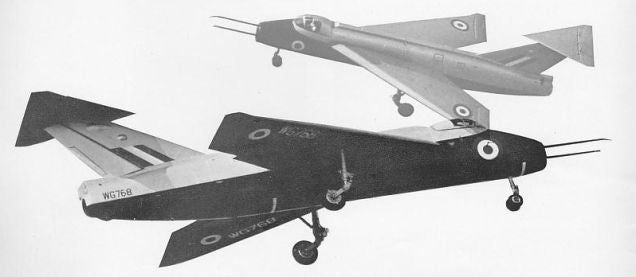
Another feature unique to the Lightning was its engine layout. Rather than place the two turbojet engines side-by-side, English Electric stacked the engines on top of each other. This arrangement gave the Lightning the power to reach Mach 2 while reducing drag and minimizing the frontal area of the fighter. The prototype Lightnings were powered by a pair of
Armstrong Siddeley Sapphire
non-afterburning (or non-reheating to the British) engines, and while those were not as powerful as the production
Rolls-Royce Avon
which would be fitted later, the Lightning still passed the sound barrier on its maiden flight. Following the successful testing of the prototypes, the P.1B, which featured the new Avon turbojet engines, took its first flight 1957 and, with the addition of a crude afterburner, allowed the Lightning to reach Mach 2. It entered service with the RAF in 1960 as the Lightning F.1, and its primary mission was to intercept Soviet bombers and provide protection to airfields so British nuclear bombers, known as the
V Force
, could take off. Subsequent variants added to the Lightning’s capability with more weapons and improved radar. With so much power available to Lightning pilots, the interceptor could achieve an altitude of 36,000 feet in less than three minutes, and tests showed that the Lightning was capable of intercepting a high-flying
Lockheed U-2
spyplane. But that speed came at a cost. The Lightning burned fuel voraciously, and many of its missions were determined simply by the amount of fuel it could carry. While the RAF was the primary operator of the Lightning, it was also exported to Kuwait and Saudi Arabia. A total of 337 aircraft were produced, but in its nearly 30 years of service, the Lightning was never used in combat, and only claimed one aircraft shot down: an unmanned RAF
Hawker Siddeley Harrier
that was flying towards East Germany after its pilot ejected. The RAF retired their Lightnings in 1988, but a small number of aircraft still flown by private pilots.
(Photo author unknown)
!!! UNKNOWN CONTENT TYPE !!!
!!! UNKNOWN CONTENT TYPE !!!
!!! UNKNOWN CONTENT TYPE !!!

August 2, 1985 – The crash of Delta Air Lines Flight 191, a regularly scheduled flight of a Lockheed L-1011 TriStar (N726DA) from Fort Lauderdale to Dallas-Fort Worth that crashed while trying to land during a thunderstorm. Lacking sophisticated Doppler radar found on today’s airliners that could warn the pilots of wind speeds in a storm, the airliner was struck by microburst -induced wind shear at low altitude that caused the L-1011 to crash a mile short of the runway, killing 136 passengers and crew, plus 1 person on the ground. The National Transportation Board investigation faulted the pilots for choosing to land through the storm, as well as a lack of training for dealing with wind shear. As a result of this crash, the Federal Aviation Administration now mandates wind shear detection systems on all commercial aircraft. A memorial plaque placed at Founder’s Plaza commemorates the tragedy. (Photo author unknown)
!!! UNKNOWN CONTENT TYPE !!!
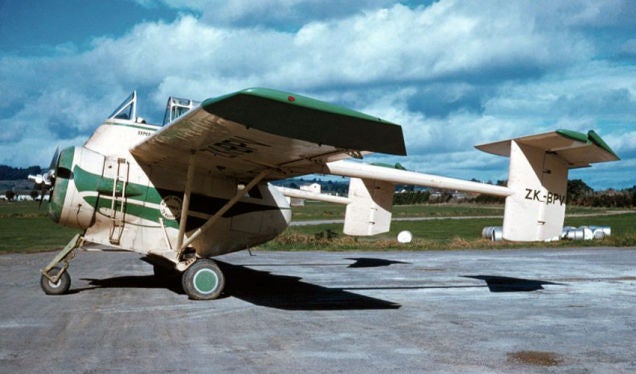
August 2, 1960 – The first flight of the Bennett Airtruck,
an agricultural aircraft constructed from surplus Royal New Zealand Air Force
North American Harvard
(T-6) training aircraft. The Airtruck is essentially an agricultural chemical hopper with wings, engine and twin-boom tail, with the cockpit placed directly over the engine. Up to 5 passengers could also be carried instead of chemicals. Two were built, and the first crashed in 1963, and the second crashed 2 years later. Despite the loss of the prototypes, the Airtruck proved to be a very efficient agricultural
aerial top dresser
. The design was transferred to the Transavia Corporation which produced the
Transavia PL-12 Airtruk
, a similar aircraft that was manufactured from scratch and did not use scavenged Harvard parts.
(Photo by Flyernzl)
!!! UNKNOWN CONTENT TYPE !!!
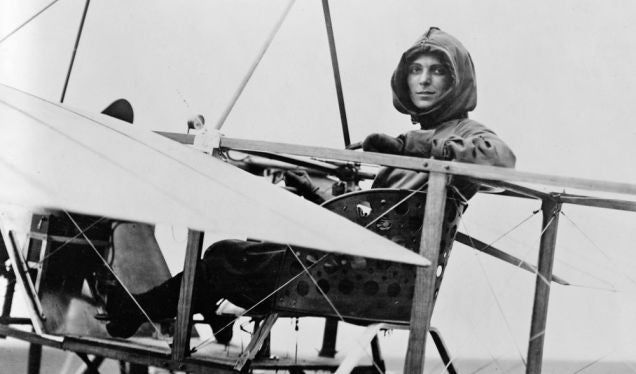
August 2, 1911 – Harriet Quimby becomes the first American woman to be certified as a pilot.
At a time when flying was dominated by male pilots, Quimby, a Hollywood screenwriter, became the first woman to earn a pilot’s license in the United States, and her piloting exploits served as an inspiration to many women of her day. Quimby was hired as a spokesperson by the Vin Fiz Company and became the first woman to fly across the English Channel in 1912, a feat that was unfortunately overshadowed by news of the sinking of the
Titanic
just one day later. Quimby was killed on July 1, 1912 when, for unknown reasons, her
Blériot XI
monoplane suddenly pitched forward, ejecting both her and her passenger at an altitude of 1,500 feet, though the plane came to earth relatively undamaged.
(Library of Congress photo)
!!! UNKNOWN CONTENT TYPE !!!
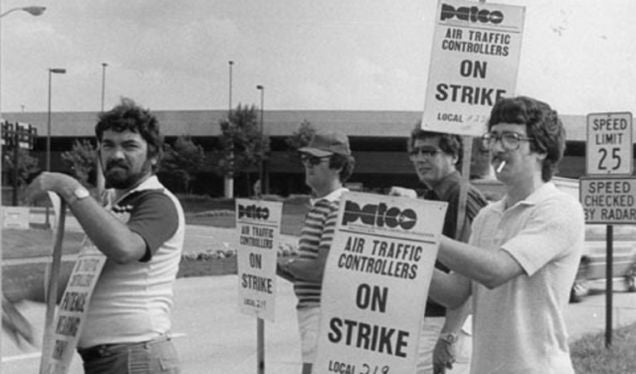
August 3, 1981 – The Professional Air Traffic Controllers go on strike.
Air traffic controllers in the US had been unionized since 1970, and had a history of poor relations with the Federal Aviation Administration. Demanding better pay, better working conditions, and a 32-hour work week, controllers went on strike in 1981 in contravention of established US laws prohibiting strikes by government employees. When the strikers refused to return to work after being ordered to do so by
President Ronald Reagan
, 11,345 controllers were fired and banned for life from federal service. In 1993,
President Bill Clinton
reversed the ban, but only 800 controllers regained their jobs, and it took 10 years to fully staff the nation’s air traffic system.
(Photo via
WSWS
)
!!! UNKNOWN CONTENT TYPE !!!
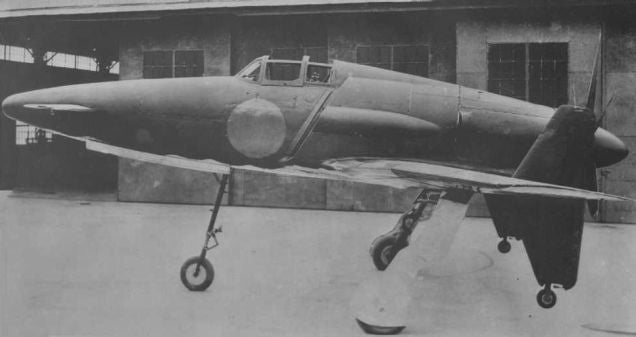
August 3, 1945 – The first flight of the Kyushu J7W
Shinden,
an interceptor developed for the Japanese Navy and notable for its use of a pusher propellor and forward
canard
. Similar in layout to the
Curtiss-Wright XP-55 Ascender
, the
Shinden
(
Magnificent Lightning
) was developed to provide defense against
Boeing B-29 Superfortress
raids on the Japanese homeland, and designers planned that the propeller engine could be supplanted by a jet engine in the future. The navy ordered the
Shinden
into production off the drawing board, but the war ended before development progressed beyond the construction of two prototypes.
(Japanese government photo)
!!! UNKNOWN CONTENT TYPE !!!
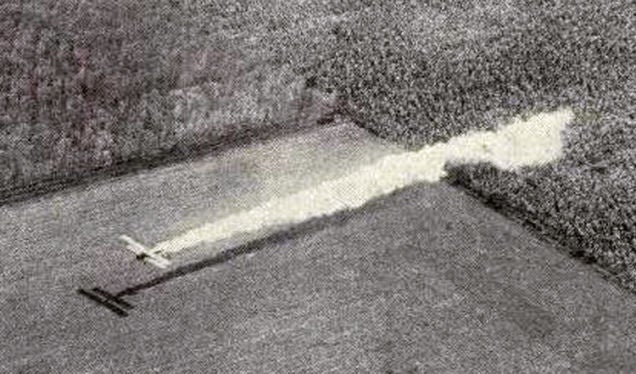
August 3, 1921 – The first use of an aircraft to apply pesticides to crops.
Aerial application
, better known as crop dusting, was first done from the air in 1906 in New Zealand when seeds were spread from a balloon. But the modern method of using airplanes began in 1921, when US Army pilot Lt.
John Macready
flew his modified
Curtiss JN-4 “Jenny”
over a field in Ohio, spreading a load of lead arsenate to kill catalpa sphinx caterpillars as part of a joint operation between the
US Agriculture Department
and the
US Army Signal Corps
. Today, crop dusting is performed the world over by both converted and purpose-built airplanes, helicopters, and even unmanned aerial vehicles.
(Photo author unknown)
!!! UNKNOWN CONTENT TYPE !!!
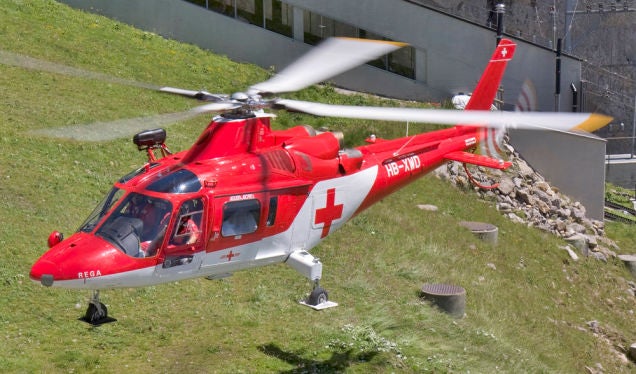
August 4, 1971 – The first flight of the AgustaWestland AW109,
a twin-engine lightweight helicopter and the first all-Italian helicopter to enter mass production.
Agusta
(now a subsidiary of
Leonardo-Finmeccanica
) originally designed the A109 in the late 1960s with a single engine, but it was soon evident that a second engine was necessary to provide the necessary lifting power. Today, the AW109 is powered by a pair of
Pratt & Whitney Canada PW200
turbine engines and can accommodate up to 7 passengers at a top speed of just under 200 mph. The AW109 entered service in 1976 and is flown by the military and government agencies all over the world, and also commonly serves as an air ambulance or for corporate transportation.
(Photo by Ikiwaner via
Wikimedia Commons
)
!!! UNKNOWN CONTENT TYPE !!!
!!! UNKNOWN CONTENT TYPE !!!
!!! UNKNOWN CONTENT TYPE !!!
!!! UNKNOWN CONTENT TYPE !!!
!!! UNKNOWN CONTENT TYPE !!!
!!! UNKNOWN CONTENT TYPE !!!
If you enjoy these Aviation History posts, please let me know in the comments. And if you missed any of the past articles, you can find them all at
Planelopnik History
. You can also find more stories about aviation and aviators at
Wingspan
and
Planes You’ve (Probably) Never Heard Of
.
!!! UNKNOWN CONTENT TYPE !!!
 "Ash78, voting early and often" (ash78)
"Ash78, voting early and often" (ash78)
08/04/2017 at 12:43, STARS: 2
August 3, 1921 – The first use of an aircraft to apply pesticides to crops
I think you mean apply “chemtrails” to “citizens.” The government didn’t want us feeling all high and mighty during the roaring 20s, but widespread chemtrails didn’t begin until right before the stock market crash and Great Depression. Coincidence?
 "Smallbear wants a modern Syclone, local Maple Leafs spammer" (smallbear94)
"Smallbear wants a modern Syclone, local Maple Leafs spammer" (smallbear94)
08/04/2017 at 12:47, STARS: 1
To quote Billy Bishop:
!!! UNKNOWN CONTENT TYPE !!!
It applies very well to the Lightning.
 "RamblinRover Luxury-Yacht" (ramblininexile)
"RamblinRover Luxury-Yacht" (ramblininexile)
08/04/2017 at 13:06, STARS: 0
Related to cropdusting, did you see my comments on the Bellanca post Tuesday? My dad knew an early cropduster who was involved with test piloting and developing equipment with the government in the ‘30s/’40s. A man named Olin Longcoy. Here’s something he worked on:
http://www.freepatentsonline.com/2395827.pdf
 "ttyymmnn" (ttyymmnn)
"ttyymmnn" (ttyymmnn)
08/04/2017 at 13:08, STARS: 0
I did not see that. Thanks for the link!
 "ttyymmnn" (ttyymmnn)
"ttyymmnn" (ttyymmnn)
08/04/2017 at 13:09, STARS: 2
The same might be said of many Russian designs. I like to call it brutal industrial efficiency.
 "ttyymmnn" (ttyymmnn)
"ttyymmnn" (ttyymmnn)
08/04/2017 at 13:10, STARS: 2
Coincidence? I think not!
 "RamblinRover Luxury-Yacht" (ramblininexile)
"RamblinRover Luxury-Yacht" (ramblininexile)
08/04/2017 at 13:11, STARS: 1
He had what may have been the last Bellanca Senior Skymaster, but it’s been MIA and possibly scrapped for 25 years after his death.
 "ttyymmnn" (ttyymmnn)
"ttyymmnn" (ttyymmnn)
08/04/2017 at 13:12, STARS: 1
The propagators of the chemtrail myth need to look at photos from WWII. They are not limited to jet aircraft.
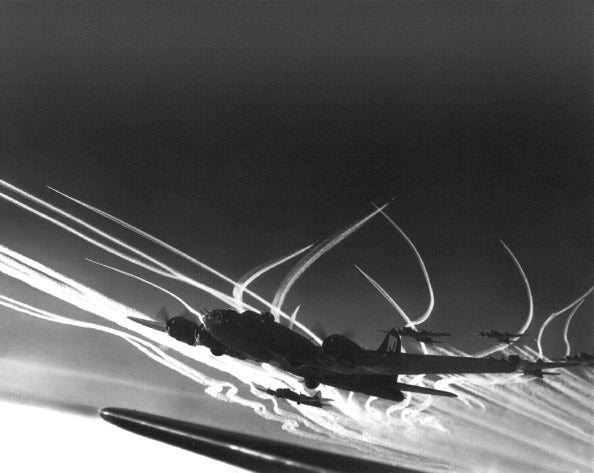
 "RallyWrench" (rndlitebmw)
"RallyWrench" (rndlitebmw)
08/04/2017 at 15:51, STARS: 0
This explains Prohibition!!